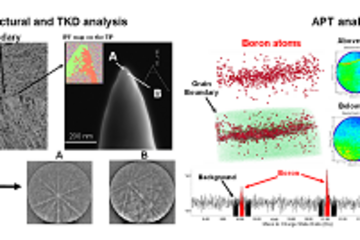All genres
81.
Talk
Can microscale wall roughness trigger unsteady/chaotic flows ? 5th International Workshop on Complex Systems, American Institute of Physics, Sendai, Japan (2007)
82.
Talk
Two-dimensional lattice Boltzmann studies of the effects of wall roughness/channel design on the flow at moderate Reynolds numbers. IUTAM Symposium on Advances in Micro-& Nanofluidics, Dresden, Germany (2007)
83.
Talk
Wettability gradient-induced flows: Surface characterization, lab-on-chip experiments and computer simulations. Annual Meeting of the DFG-Priority Program Nano- & Microfluidics (SPP 1164), Bad-Honnef, Germany (2007)
84.
Talk
Dunes and their morphology: The game of wind and sand. Fakultät für Georessourcen und Materialtechnik, RWTH Aachen, Aachen, Germany (2007)
85.
Talk
Wind blown sand. Seminar talk at MPI für Eisenforschung GmbH, Düsseldorf, Germany (2007)
86.
Talk
Lattice Boltzmann studies of binary liquids and liquid-vapor systems beyond equilibrium. Leibniz Institute for Polymer Research, Dresden, Germany (2007)
87.
Talk
Lattice Boltzmann studies of driven multi-phase systems. The Physics Department of TU Munich, München, Germany (2007)
88.
Talk
A comprehensive introduction to lattice Boltzmann methods in materials science and engineering. Fritz-Haber Institut der Max-Planck Gesellschaft, Berlin, Germany (2007)
89.
Talk
Wall roughness and chaotic lubricant flows: A lattice Boltzmann study. Fritz-Haber Institut der Max-Planck Gesellschaft, Berlin, Germany (2007)
90.
Talk
Non linear rheology and dynamic yielding in a simple glass: A molecular dynamics study. School of Physics, University of Edinburgh, UK (2006)
91.
Talk
Microscale fluid flow at rough metallic surfaces: A lattice Boltzmann Study. ASME Pressure Vessels and Piping Division Conference, Vancouver, BC, Canada (2006)
92.
Talk
Chaotic lubricant flows in metal forming: Some new insights from lattice Boltzmann simulations. Seminar Talk at MPI für Eisenforschung GmbH, Düsseldorf, Germany (2006)
93.
Talk
Lattice Boltzmann simulations of moderate Reynolds number flows in strongly confined channels: The role of the wall roughness. Massachussets Institute of Technology (MIT), Boston, MA, USA (2006)
94.
Talk
Chaotic flows in microchannels: A lattice Boltzmann study. NSTI Nanotech 2006 Conference, Boston, MA, USA (2006)
95.
Talk
MD simulations of steady state yielding in a simple glass. 31st Middle Euoropean Cooperation on Statistical Physics (MECO31), Primošten, Croatia (2006)
96.
Talk
Rheological response of a model glass: Theory versus computer simulation. 2nd International workshop on dynamics in viscous liquids, Mainz, Germany (2006)
97.
Talk
Lattice Boltzmann studies of chaotic flows in microchannels. The congress of the German Physical Society (DPG), Dresden, Germany (2006)
98.
Talk
Lattice Boltzmann studies of flow instability in microchannels: The role of the surface roughness/topology. Laboratoire de Physique et de la Matiere Condensee et Nanostructure, Universite Claude Bernard, Lyon1, France (2005)
99.
Talk
Complex rheology of simple systems: Shear thinning, dynamic versus static yielding and flow heterogeneity. CECAM-Workshop on Simulating deformed glasses and melts: From simple liquids to polymers, Lyon, France (2005)
100.
Talk
Rheology of dense amorphous systems: Recent theories versus molecular dynamics simulations. 5th International Discussion Meeting on Relaxation in Complex Systems, Lille, France (2005)











